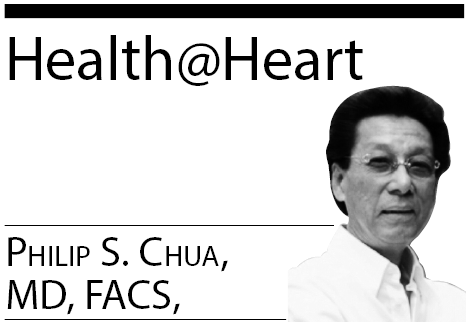AMERICANS are complaining that when they go to medical clinics or to the emergency rooms, they are seen by physician assistants or nurse practitioners, and not by physicians (MDs) anymore, unlike 3 decades or so ago. They also miss the more personal attention, focus, and neighborly demeanor from physicians attending to them these days, who are more concentrated on strict corporate-mandated recording data on their computers, spending less time looking at them in their eyes and talking to them like physicians used to in the olden days.
The golden era of personalized, friendly, dedicated medical care appears to have left our healthcare system in America and corporate impersonal practice of medicine has taken over, making healthcare more like a business than a noble art and a compassionate profession. The humanitarian aspect of medical practice has been replaced by corporate greed, whose main interest is to make money, keenly concerned about the bottom line.
While the technical facet of medical care in the United States is still superior to most other nations, the physician-patient relationship and quality of care have deteriorated.
Lawsuit
In 1981, as president of the Medical Staff of Saint Mary’s Hospital in Gary, Indiana and its satellite hospital in Hobart, I spearheaded the more than 250 fellow physicians of mine and filed a lawsuit against the hospital administration for illegal practice of medicine. At that time, in Indiana, only duly-trained and licensed physicians were allowed to practice medicine.
What the hospital administrator had done was to hire outside physicians, paid them a salary, provided them free office space and other benefits as employees, to practice in Northwest Indiana (adjacent to Chicago), in competition with the members of the staff who were loyal to St. Mary’s Hospital, bringing in patients to support the hospital for decades, spending their own finances for overhead, etc. The goal of the administrator was to practice corporate medicine and make additional money from it.
What the administrator did was a betrayal of the trust of its dedicated medical staff. The profit from this illegal hospital practice venture went to St. Mary’s. Corporate practice was not legal then and the various newspapers in Northwest Indiana made that very clear. The highly publicized lawsuit was a lesson the other area hospitals heeded.
The Indiana Court was on our side and the hospital administrator was fired.
Golden era
From centuries past to the 90s was the golden era of medical practice in America, where physicians were free to practice their art and passion in medical science, and where physician-relationship was close and highly valued.
However, in the mid-60s and onwards some physicians abused the system. Medicare/Medicaid fraud by a tiny number (no specific government data available) in the medical profession tainted the good name and integrity of the majority of physicians in the nation.
In a speech I delivered as president of the Philippine Medical Association in Chicago in 1964 at the Conrad Hilton Hotel, I severely condemned the Filipino and other physicians in the United States who were involved in Medicare fraud at the time.
Blame on MDs
The American Medical Association and its 467,679 physician members in the 1980s, who were too independent and too comfortable and who did not want to join organized medicine to make the AMA a united, powerful, political lobbying force, are to blame for the entry of corporate practice of medicine today.
As a cardiac surgeon in private practice from 1972 to 2001, I was keenly aware of the sad situation, which I had lambasted my fellow physicians for in my editorials then. One of them was entitled “Quo Vadis, Healers?,” a guest editorial in 1998 in the Indiana Medicine journal of the Indiana State Medical Association, reprinted in Unchartered Journey, in the Golden Anniversary Legacy Journal of the Society of Philippine Surgeons in America in October 2022.
So, here we are today, swallowed by corporate giants, as money-makers for them, subjected to their selfish whims, even dictating to physicians on how to practice medicine, subtly coercing their physician employees to see the maximum number of patients a day, resulting in less time for each patient and over-worked, stressed-out physician employees. The change was adverse for the patients and the physicians. There are about 300 to 400 physicians who commit suicide each year in the United States.
The untenable healthcare expenditure in the nation of about $800 billion in 1991, a 14.4 percent increase from the previous year, was also a significant factor for encouraging and enabling the corporate take-over of medical practice, making physicians today their employees, in the guise of cutting medical expenditures, lowering the healthcare cost.
In 2023, the United States spent 4.9 trillion on healthcare, which was about $14,570 per person, a 7.5 percent increase from 2022. The private insurance premium today is about $8,951 for a single person and $25,572 for a family.
The people are hopeful that the Trump administration’s new healthcare policies to make it more affordable, more accessible, and more comprehensive, and the expanded use of Artificial Intelligence, will usher in a more favorable trend in healthcare delivery and medical care itself. President Trump’s legislative plan to include a blue logo (“FDA Healthy with a checkmark) on food items scientifically considered healthy by the US-FDA to help guide the public in its choice with ease, is an excellent innovative strategy for better diet and health.
In the meantime, let us accept the inevitable present, be as healthy as we can be, and look forward to a more compassionate and a greater future in healthcare.
The main objective of this column is to educate and inspire people to live a healthier lifestyle, to prevent illnesses and disabilities and achieve a happier and more productive life. Any diagnosis, recommendation, or treatment in our article are general medical information and not intended to be applicable to or appropriate for anyone. This column is not a substitute for your physician, who knows your condition well and who is your best ally when it comes to your health.
* * *
The opinions, beliefs and viewpoints expressed by the author do not necessarily reflect the opinions, beliefs and viewpoints of Asian Journal, its management, editorial board and staff.
* * *
Philip S. Chua, MD, FACS, FPCS, a Cardiac Surgeon Emeritus based in Northwest Indiana and Las Vegas, Nevada, is an international medical lecturer/author, health advocate, medical missionary, newspaper columnist, and chairman of the Filipino United Network-USA, a 501(c)3 humanitarian foundation in the United States. He is a recipient of the Indiana Sagamore of the Wabash Award in 1995, presented by then Indiana Governor, U.S. senator, and later a presidential candidate, Evan Bayh. Other Sagamore past awardees include President Harry S. Truman, President George HW Bush, Astronaut Gus Grissom, distinguished educators, scientists, etc. (Wikipedia). Websites: FUN8888.com, Today.SPSAtoday.com, and philipSchua.com; Email: scalpelpen@gmail.com.





